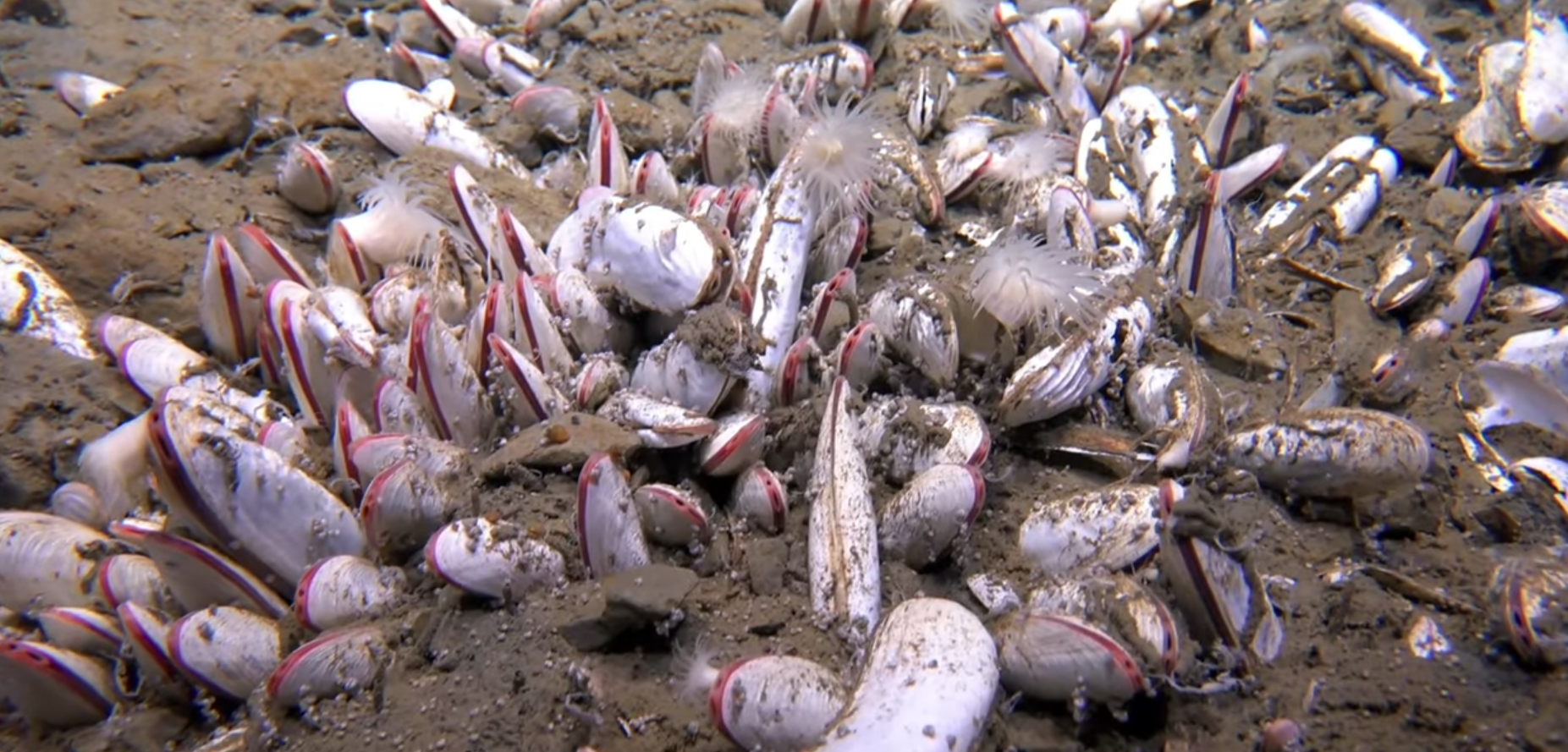
Scientists exploring two oceanic trenches in the northwest Pacific have discovered thriving communities of marine life, including thousands of worms and mollusks nearly six miles beneath the surface, making it the deepest colony of creatures ever to be observed.
Dominated by tube worms and clams, the community is able to survive at depths through a process known as chemosynthesis, meaning that life here is nourished by the fluids ‘rich in hydrogen sulfide and methane’ seeping from the seafloor, which they then turn into energy.
The discovery was made by a team of scientists – led by researchers from China – piloting a deep-sea submersible able to reach these astounding depths (up to 10 kilometres below sea level) within the northwest Pacific’s Mariana Trench.
According to the team’s research paper now published in the scientific journal, Nature the discovery of life in Earth’s deepest underwater valley suggests there could be much more life thriving in hostile conditions at the bottom of the – largely unexplored – ocean.
Co-lead author on the study, Xiatong Peng, from China’s Institute of Deep-sea Science and Engineering at the Chinese Academy of Science, said: “Hadal trenches, some of the Earth’s least explored and understood environments have long been proposed to harbour chemosynthesis-based communities. Yet, despite increasing attention, actual documentation of such communities has been exceptionally rare.”
This paper begins to change that. Within it, the team documents the discovery of the “deepest and most extensive chemosynthesis-based communities known to exist on Earth” during an expedition to the Kuril-Kamchatka Trench and the western Aleutian Trench, using the manned submersible, Fendouzhe.
The discovered communities – dominated by the species siboglinid Polychaeta and Bivalvia – span a distance of 2,500km at depths from 5,800 metres to as much as 9,533 metres.
“Given geological similarities with other hadal trenches, such chemosynthesis-based communities might be more widespread than previously anticipated,” said Xiatong Peng. “These findings challenge current models of life at extreme limits and carbon cycling in the deep ocean.”
